How We Track Net Promoter Score (NPS) to Foster Growth
During the early stages of building a SaaS product, we tend to work closely with customers. This is the only way to ensure the elusive product/market fit. The Lean Startup methodology, the vade mecum of startups everywhere, captures this under the principle of validated learning.
Once you have built a product that the market has accepted and the business is growing, it is easy to fall out of touch with your customers. When your decisions during the early days start paying off, complacency can set in. Worse yet, you can start overdosing on your own hubris, attaching too much importance to your intuitive genius.
This is an easy trap to fall into in consumer SaaS because the entire sales cycle tends to be automated: people find your service on the web, often through word of mouth, sign up for an account, and start paying. SaaS compounds, so the same way it is difficult to get the revenue engine chugging along, mistakes also take a while to be reflected in your bottom line, making them more expensive.
Net Promoter Score® (NPS) is our defence against complacency with Hiveage. It allows us to closely track customer sentiment as the service evolves through feature enhancements, design changes and pricing revisions. In an industry where 80% of new customers are acquired through word of mouth and referrals, it is a key metric to be tracked for planning and facilitating our growth.
What is NPS?
NPS was first introduced by Frederick Reichheld in an HBR classic, The One Number You Need to Grow. The basic premise is simple:
[A] single survey question can, in fact, serve as a useful predictor of growth. But that question isn’t about customer satisfaction or even loyalty—at least in so many words. Rather, it’s about customers’ willingness to recommend a product or service to someone else. In fact, in most of the industries that I studied, the percentage of customers who were enthusiastic enough to refer a friend or colleague—perhaps the strongest sign of customer loyalty—correlated directly with differences in growth rates among competitors.
NPS is deceptively simple. It is all about asking just one question of your customer: How likely is it that you would recommend our company/product/service to a friend or colleague? The scoring for this answer is based on a 0 to 10 scale. The respondents are then asked an open-ended follow-up question to elaborate on why they gave a certain rating (e.g., Please explain why you gave us this score.)
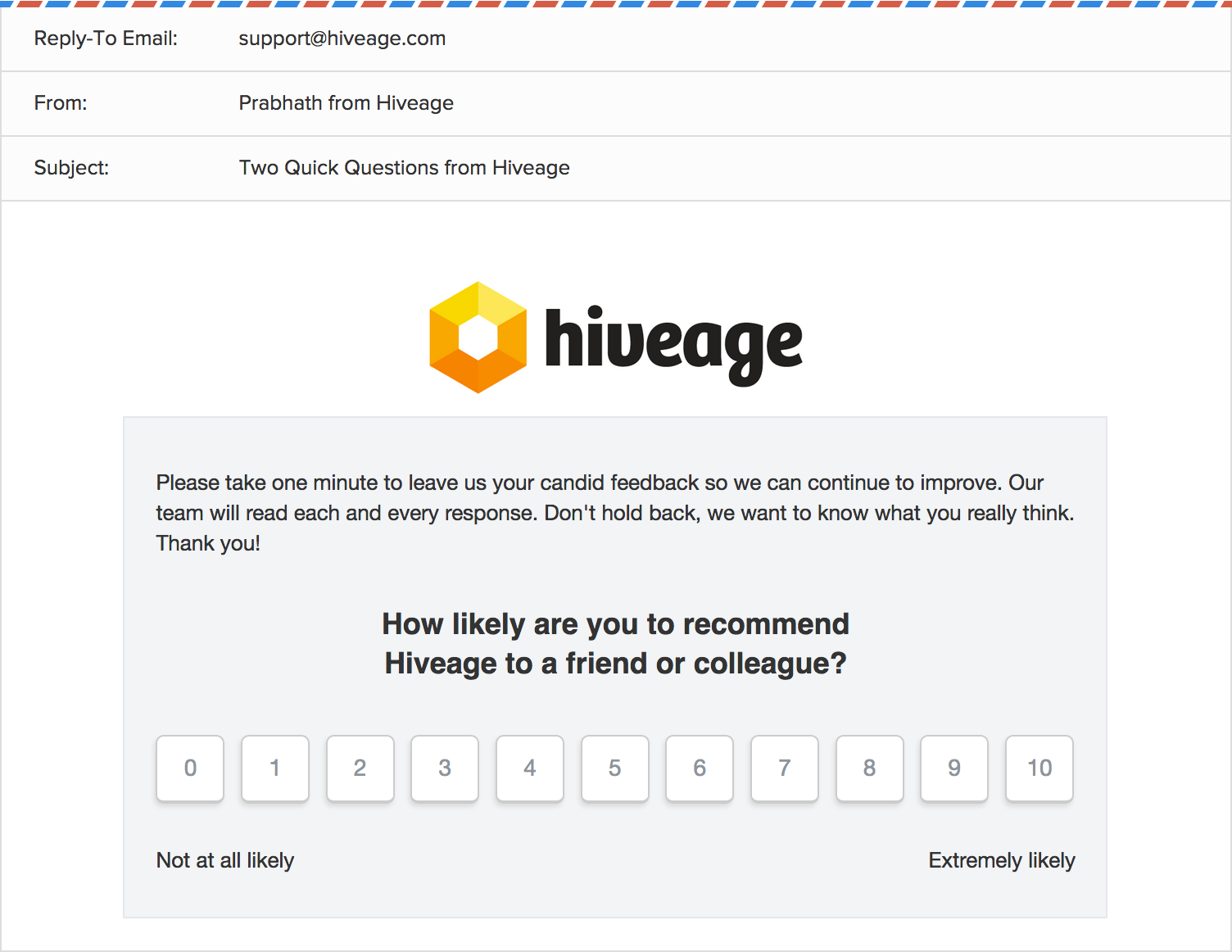
The customers who respond with a score of 9 or 10 are called Promoters: they are more likely to buy more, remain as customers longer, and refer other potential customers. Those who respond with a score of 0 to 6 are labeled Detractors—essentially the opposite of Promoters. Those who respond with 7 and 8 are labeled Passives, their behavior likely to fall in the middle of Promoters and Detractors.
The Net Promoter Score is then calculated by subtracting the percentage of customers who are Detractors from the percentage of customers who are Promoters. The Passives also count towards the total number of respondents when calculating these percentages, pushing the net score towards 0.
Why NPS?
At first glance, NPS looks like one of those enterprise feel-good metrics that don’t really have much real-world meaning. Sure, there’s a lot of literature on it, and every large corporation seems to be using it, but is it really applicable for startups? We weren’t convinced until Jason Lemkin wrote about it:
I was wrong. Track NPS as a core, monthly metric. Share it with everyone. And importantly—use it for a cross-functional discussion across Sales, Support, Customer Success, Marketing, Engineering, and Product. It’s the one metric all of them directly impact, and all of them are equally responsible for.
When the Godfather of SaaS speaks, you listen.
Instead of making this yet another dry listing of the benefits of NPS, we’ll show you how we applied it to Hiveage and what we gained from it.
NPS Survey Setup
There are plenty of NPS survey services, and we chose Promoter.io. They have a nice guide to explain how to do it right:
If you’re not seeing at least a 10x return on the cost of measuring NPS, you’re doing it the wrong way. Doing it the right way means that you’re proactively reducing churn, improving your product based on qualitative and actionable feedback, identifying new opportunities and growing your revenue from organic recommendations and referrals each month. All combined, the cost of measuring NPS is a drop in the bucket compared to the results.
Promoter.io supports direct API integration, but to begin with we simply uploaded a CSV file with our customer data. An email is the only required field to set up a campaign, but to generate meaningful and actionable results, we added the following details too:
- Firstname
- Subdomain (e.g., example.hiveage.com)
- Account age (e.g., 2 years)
- Plan (e.g., Starter)
- Country
We made no changes to the default NPS survey template of Promoter.io: before customising things, we wanted to go with the tried and tested settings. The survey was conducted via email as recommended by them, rather than through an in-app prompt.
During the month of October, we sent out the NPS survey email to 2860 customers, at a rate of 130 per day. We had 835 responses in total, at an average response rate of 29%.
NPS Survey Results
We set an alert for the survey responses, directed to our general support email address. The entire Hiveage team got to see them trickling in. The results were fascinating, but equally interesting was the way the team rallied around to observe, celebrate the positives and fret over the negatives: an unexpected cultural benefit.
We started the survey just days after a huge change in Hiveage: we had ended the free plan, not just for new signups but for all customers. Many of our free users left the service, while the others upgraded their accounts. I personally expected to see an NPS close to zero—perhaps even negative—and thought this exercise would give us insights into how we could improve the customer sentiment to be more positive.
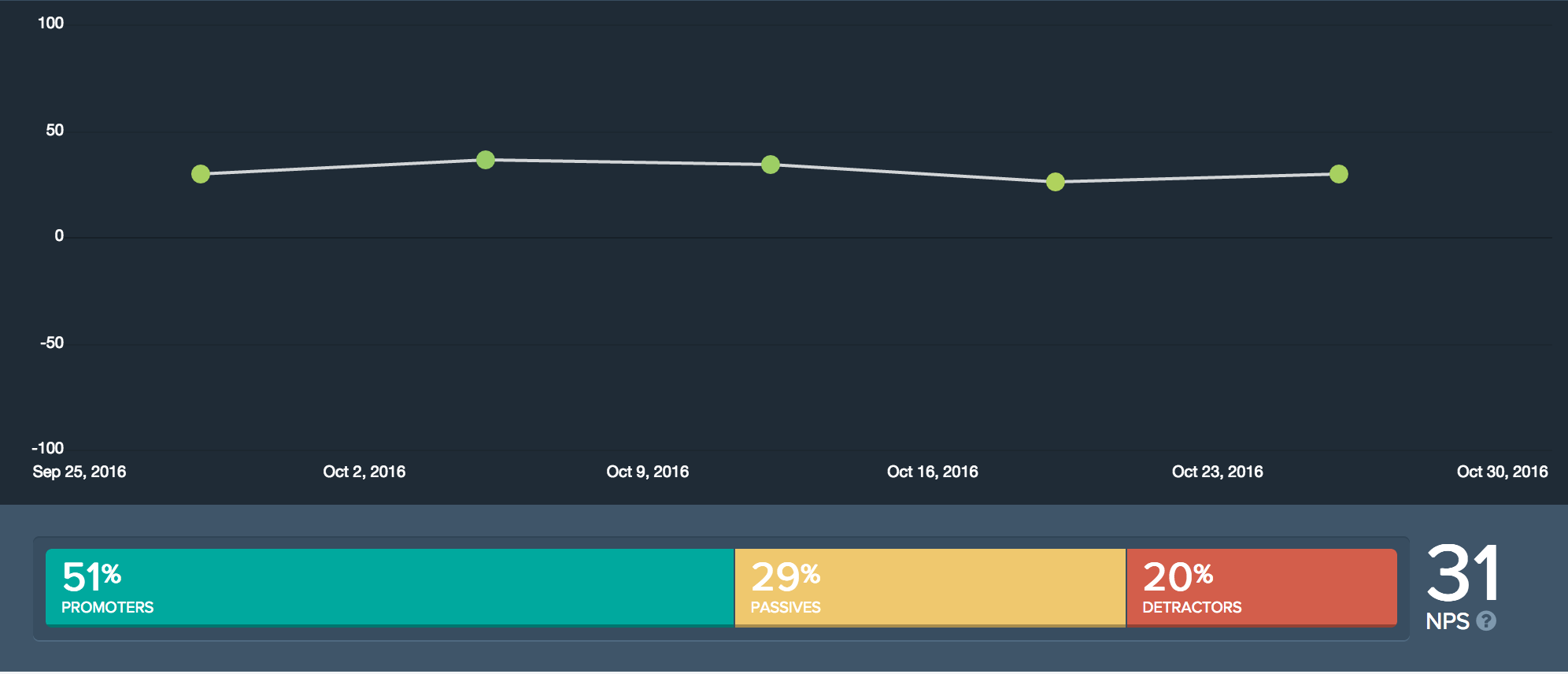
It was a pleasant surprise when the first day’s NPS was 30, based on 59 responses. And it continued to hover in the low 30s throughout the month. Anything above 0 is good, and 50+ is excellent, so this was wonderful news to us. Even before analysing the results, we were gaining insights: our customers loved us more than we imagined.
Analysing NPS Results
We noticed the biggest variation in NPS between the different subscription levels, whereas the account age (i.e., how long a customer has been with Hiveage) had little influence on the results. This seemed to imply that our service had been consistent over the years, but that customers on different plans perceived the value of the service differently.
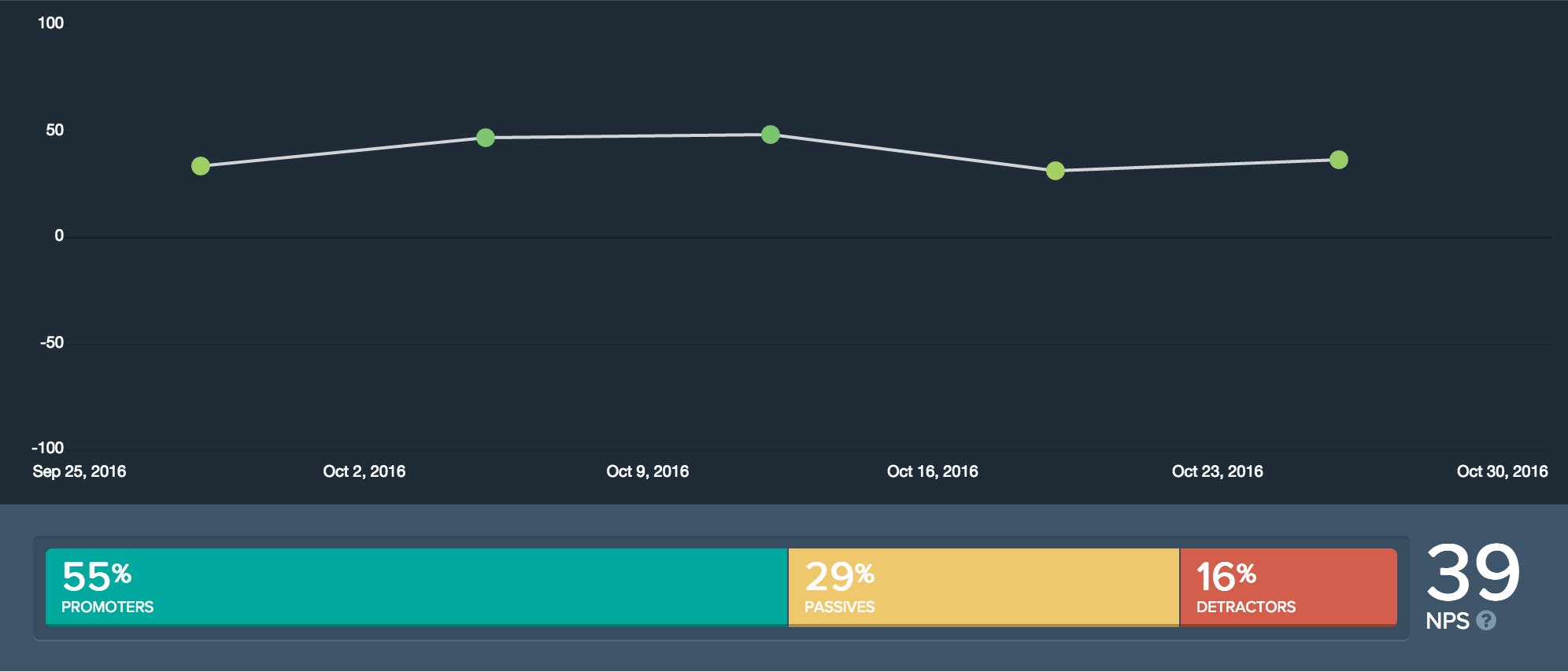
Users on our Custom plan, where they could pick and choose features and pay only for those, gave us the highest NPS. Incidentally, these are also the customers who have been with us the longest, as the custom plan is no longer available for new signups.
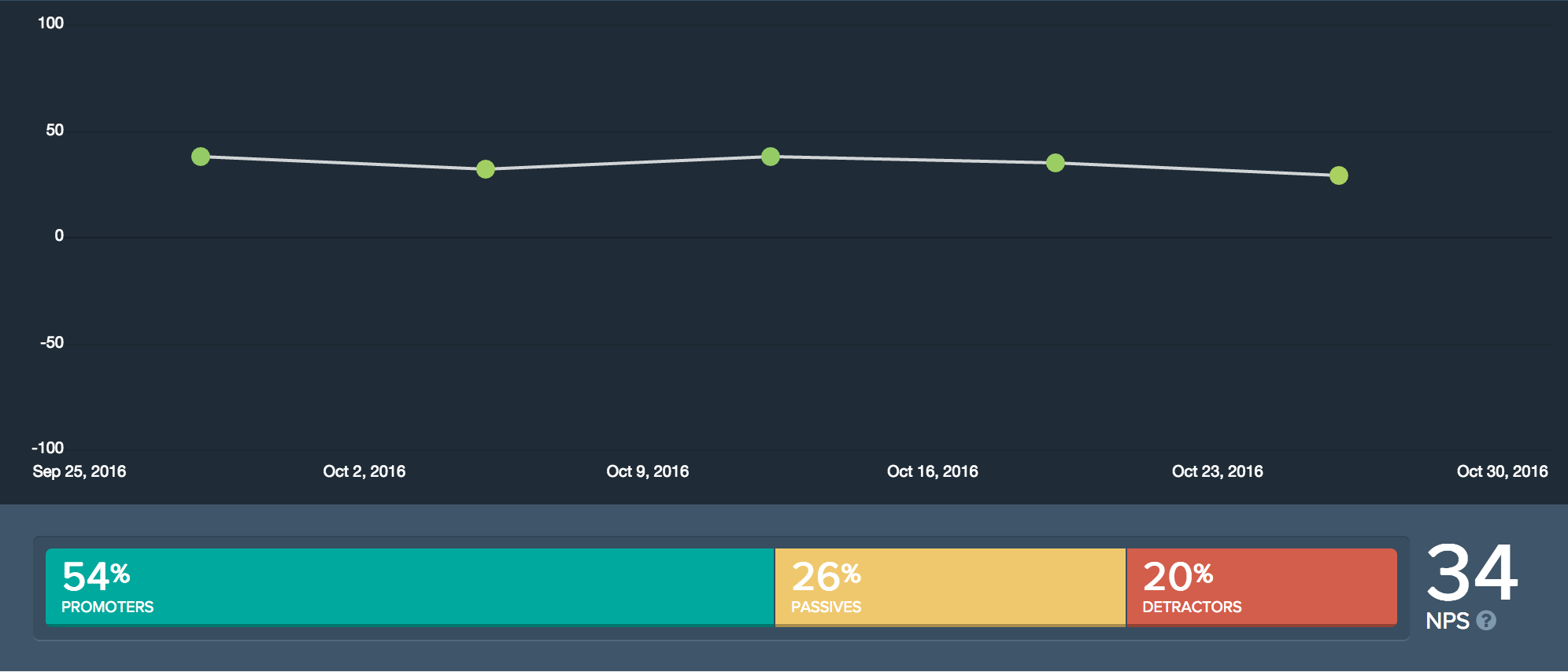
Customers on our fixed plans, starting from $15/month, gave us an above-average rating. The account age or the subscription amount didn’t seem to have an effect on the score.
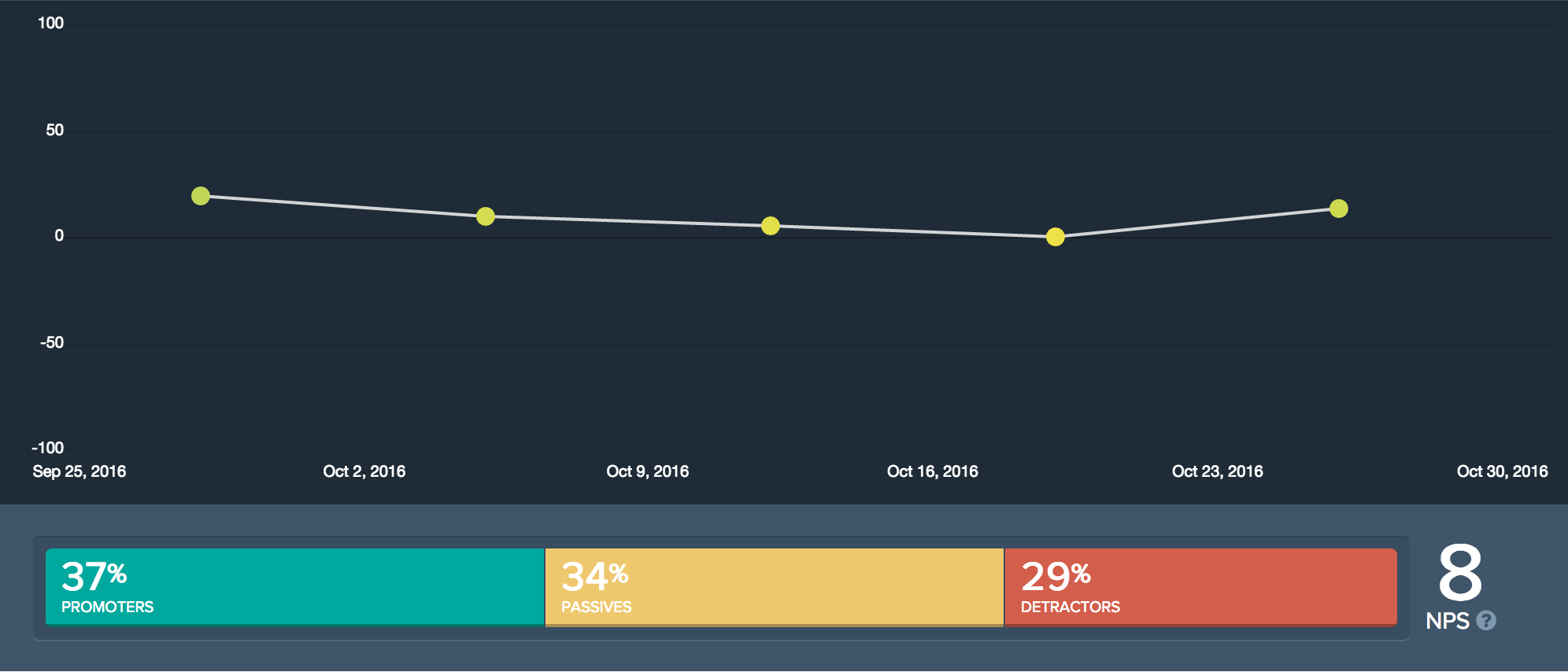
The lowest score came from our Lite customers, who were on the $2/month plan. Almost all of them were former free users who had to upgrade when we ended the free plan. A bit of unhappiness was expected from them. I’m happy the score was above 0!
However, as I will explain later, this low NPS from Lite users led us to quickly revise the Hiveage pricing strategy.
Detailed Feedback

The most important part of the NPS survey is probably the detailed feedback that many respondents cared to share with us. Reflecting our positive NPS, most of them had good things to say about Hiveage. Where they were negative, we often had a lesson to learn.

Promoter.io lets us tag these responses for further analysis. After reading through several dozen replies, we figured out four main categories to tag them with: usability, features, price and service. It is important to note that we didn’t presuppose these categories and try to force them on the feedback: we wanted the tags to emerge from what we were reading.
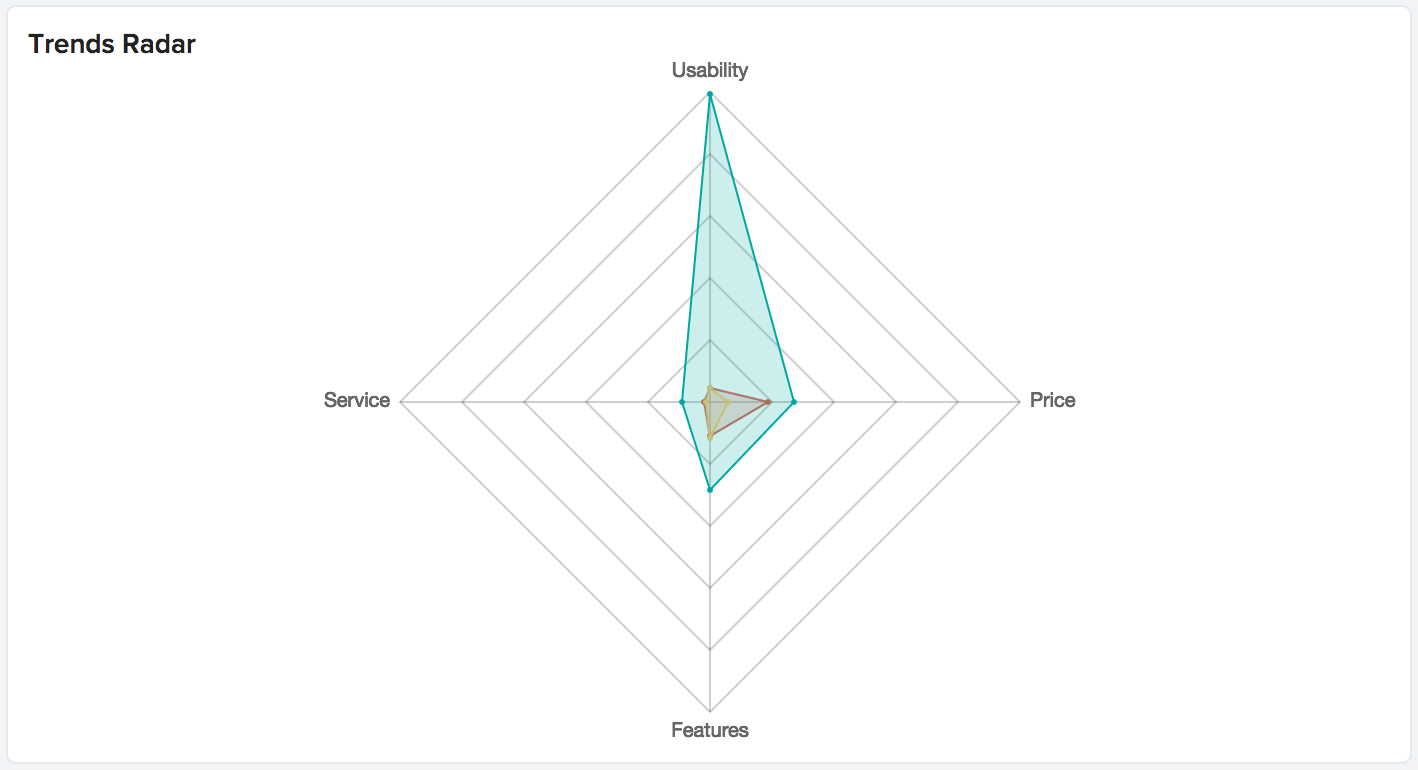
Whenever we talk about Hiveage, we highlight its ease of use. Delivering a great user experience has always been a high priority for us, and this was the backdrop against which we designed the UI and workflows and selected features for inclusion. It was immensely satisfying to read so many responses literally containing the phrase “ease of use.” In fact, it seemed so coordinated and consistent that we even checked whether Promoter.io had mentioned the phrase in the follow-up question as an example or clarification.

It seems Hiveage is doing well with the human factors: usability and customer support. There’s room for improvement when it comes to the features we offer. Our pricing strategy will not change, so our reading of the low—but still positive—NPS trend for price is that we need to increase the perceived value of our service so that customers can better justify the cost in their minds.

Connecting with Customers
NPS is not a passive metric:
Although interesting, your NPS score isn’t actually that important. You should keep track of it and make sure it keeps getting better over time, but don’t fret over the absolute number. Net Promoter is not an exercise in statistics; rather, it’s about emotion and connection to your brand.
After all, your goal with this survey isn’t just gathering intelligence—it is building customer loyalty. The most important part of analyzing your results is how you respond to these surveys.
We used the NPS survey as an opportunity to actively engage with customers. Every one of us in the team read through all the responses. We replied to the customers, encouraging Promoters to refer new people to the service, connecting with Passives to figure out where we can improve, and learning from the Detractors where we are failing.
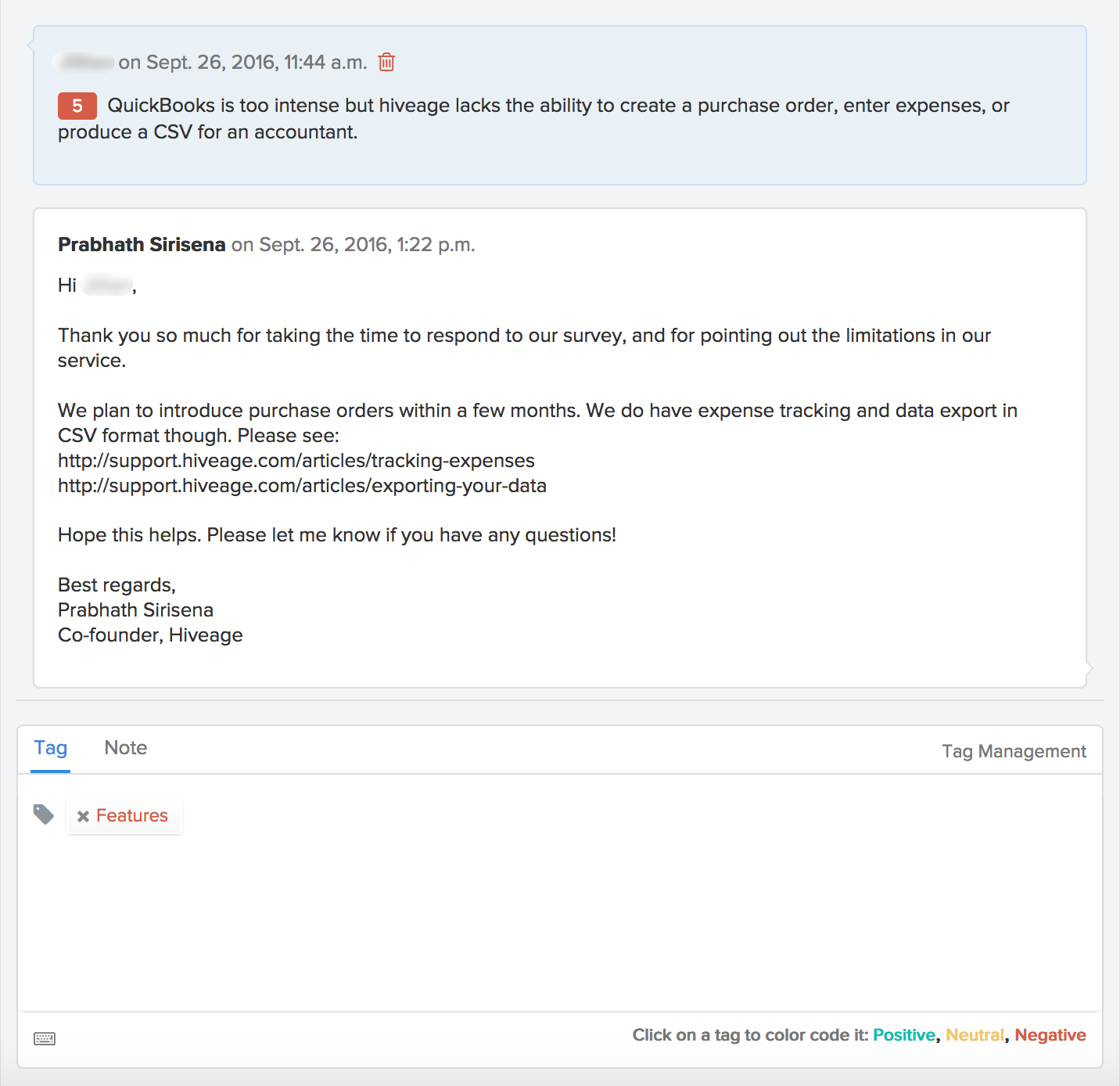
Making Informed Decisions
One notable outcome of this NPS survey was that, after reviewing mere a two days’ worth of NPS results, we decided to end our Lite plan. It was an entry-level option with limited features (e.g., 20 clients, 100 invoices, whereas our other plans support unlimited clients and invoices). The significantly low NPS from Lite customers compared to others meant that we had two ways to proceed:
- Try to change Lite customer perceptions so that they have a more favourable view of Hiveage, or
- Eliminate the Lite factor altogether and focus on our regular plans
We didn’t deliberate on this too much. We ended the Lite plan. It was making people love Hiveage less.
If you first make sure your product is loved, it will be much easier to grow. Users will be easier to retain, and they’ll tell others about what you’ve made. Your users essentially become a free marketing and sales force for you.
Without NPS, we never would have known how Lite customers saw Hiveage and what effect it had on our brand. It proved to be a management tool powerful enough to facilitate decisions within two days of use.
We will continue to use NPS as a key metric for Hiveage. A direct API integration with Promoter.io is in the works so that we can automatically run separate campaigns for new users who are on the free trial and customers who already have subscriptions. Tracking NPS has truly added a new dimension to the way we run our SaaS, offering us valuable insights into the needs of our customers, and creating more opportunities for organic growth.
